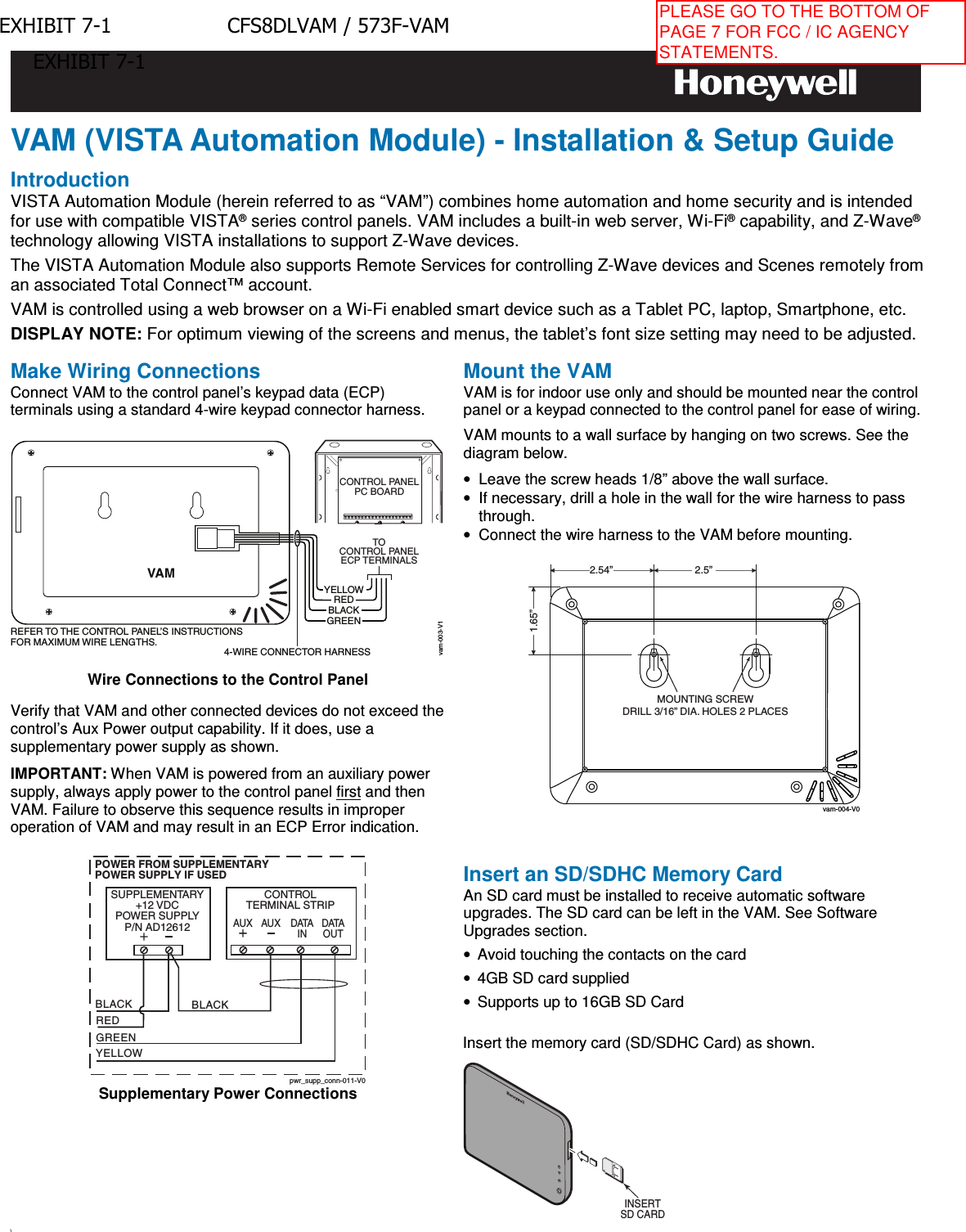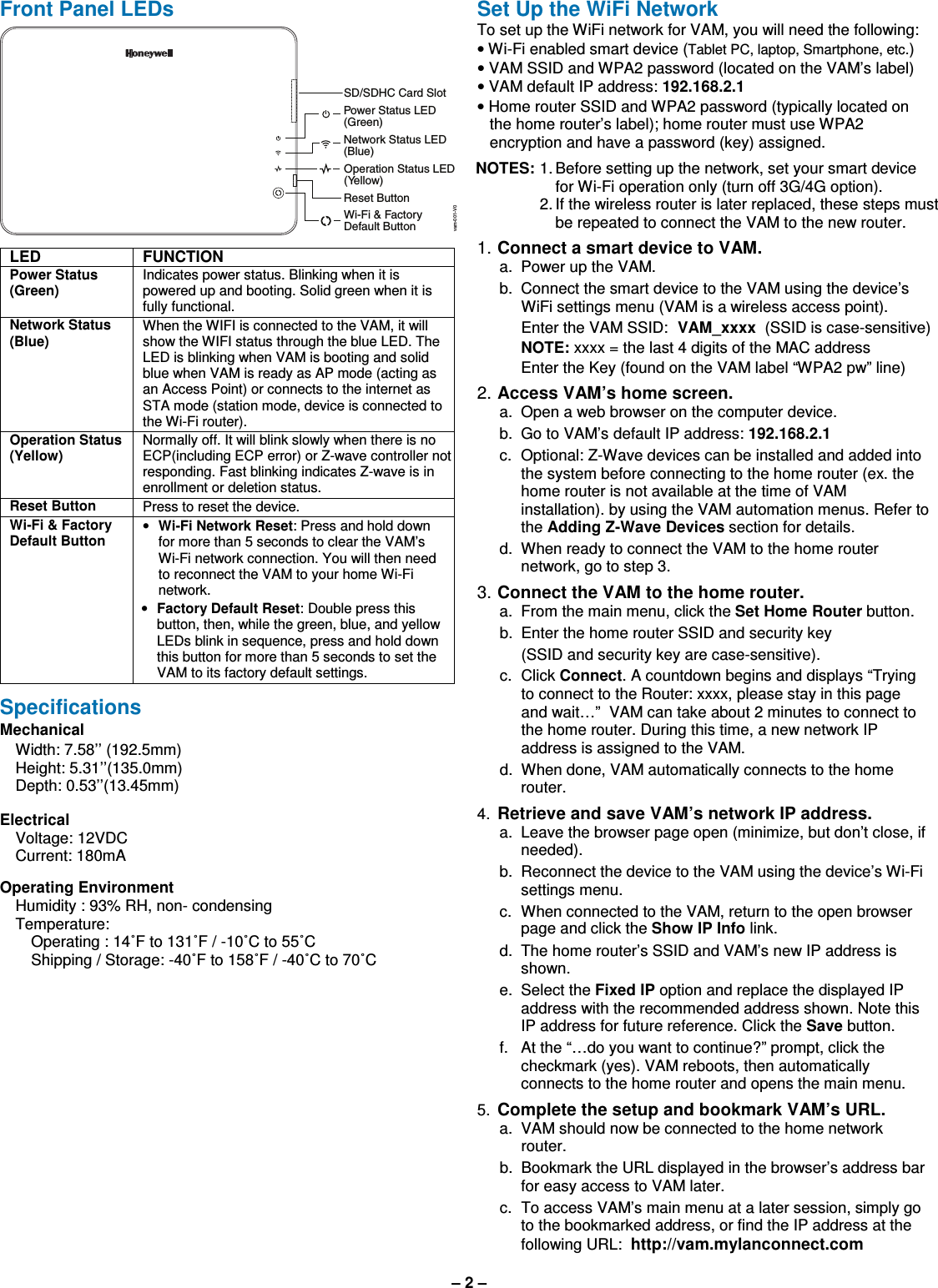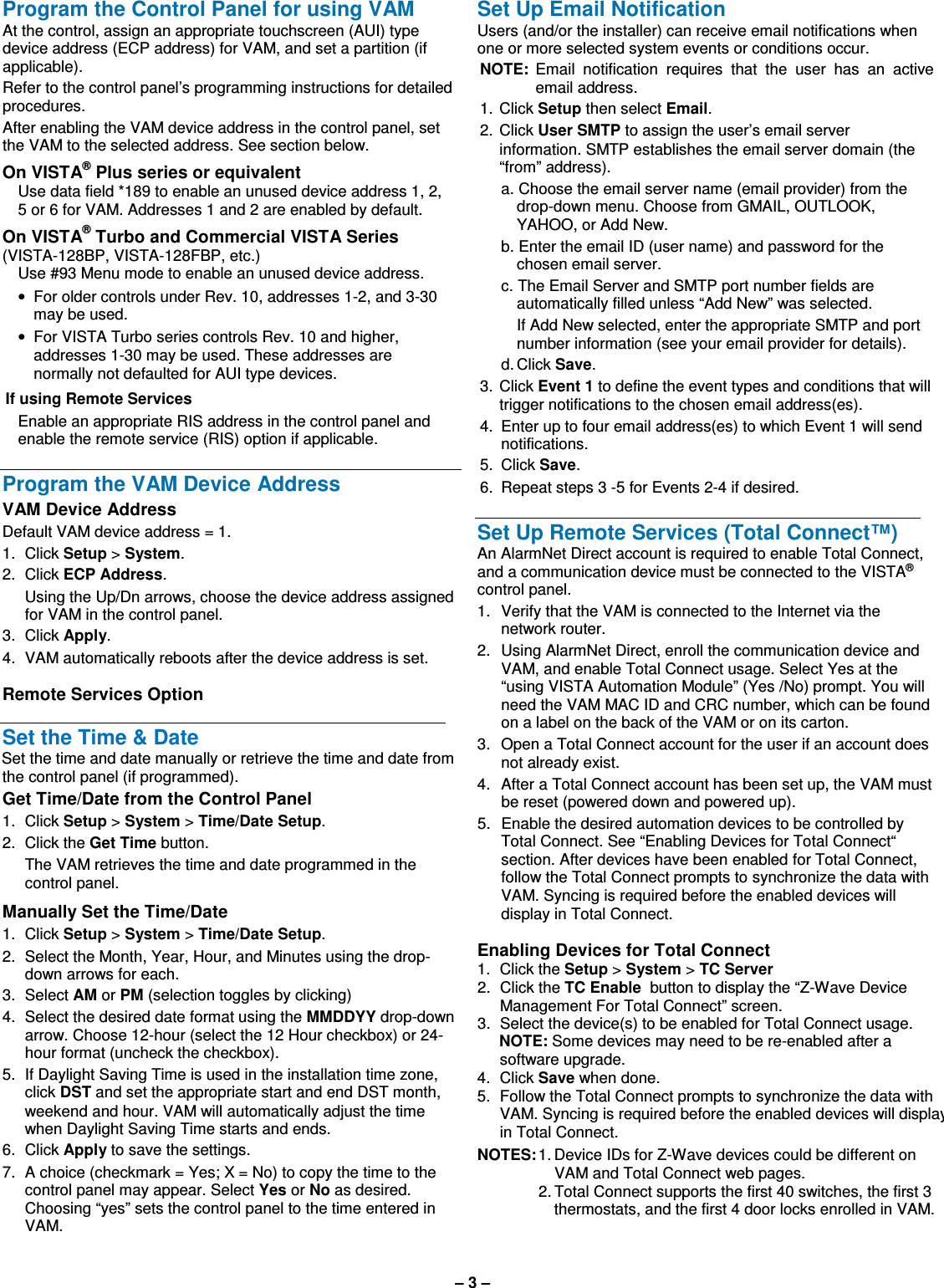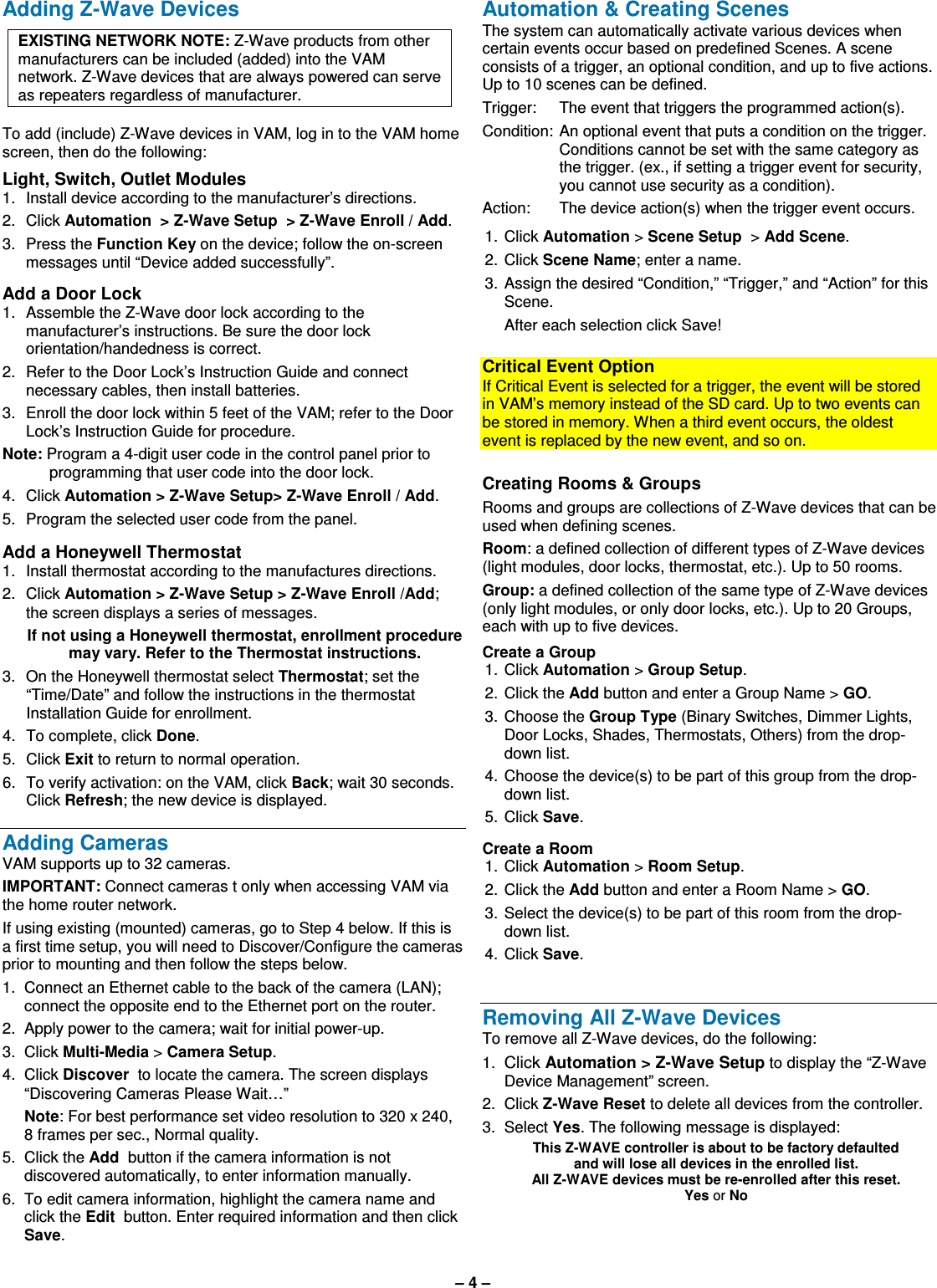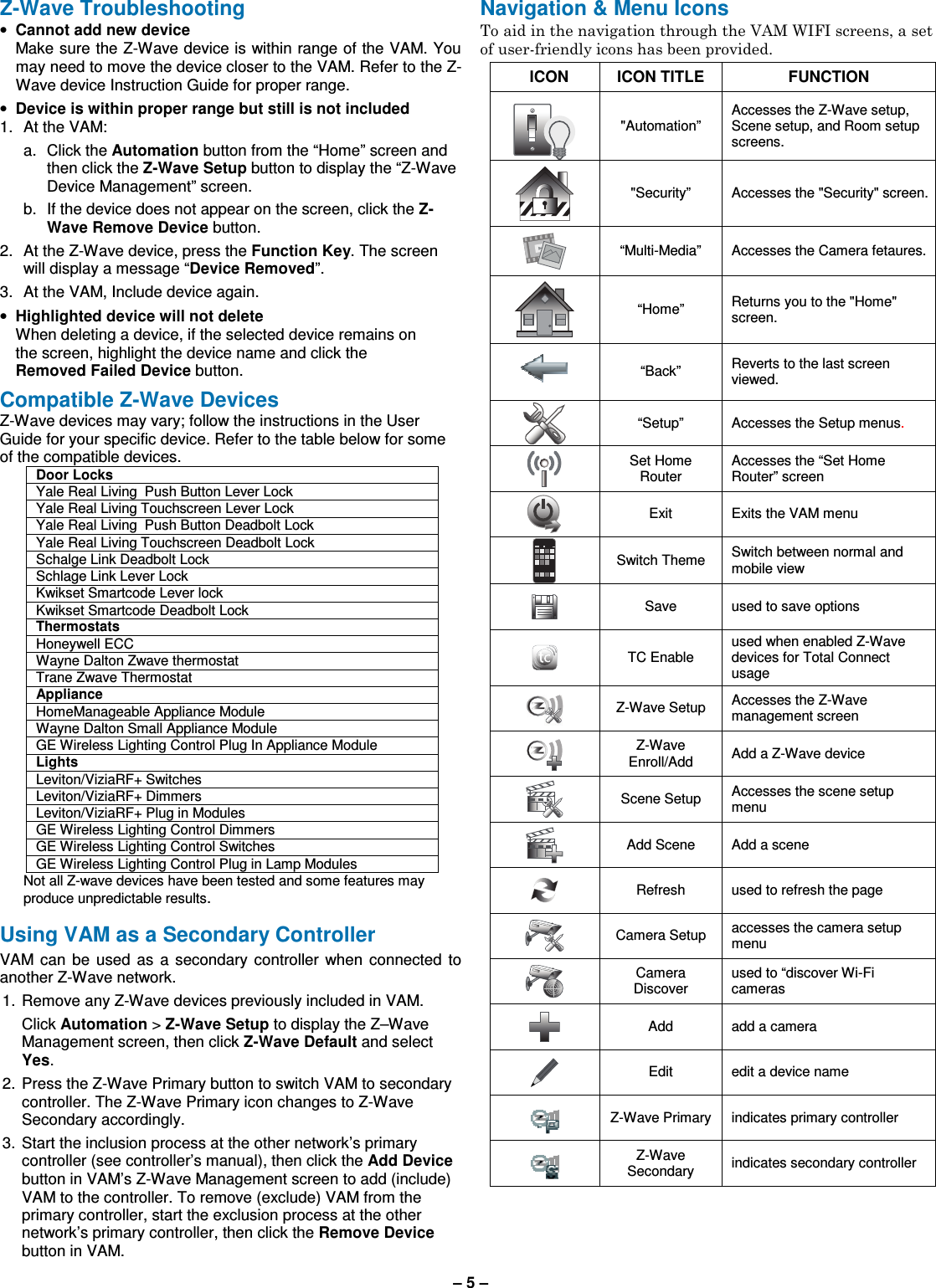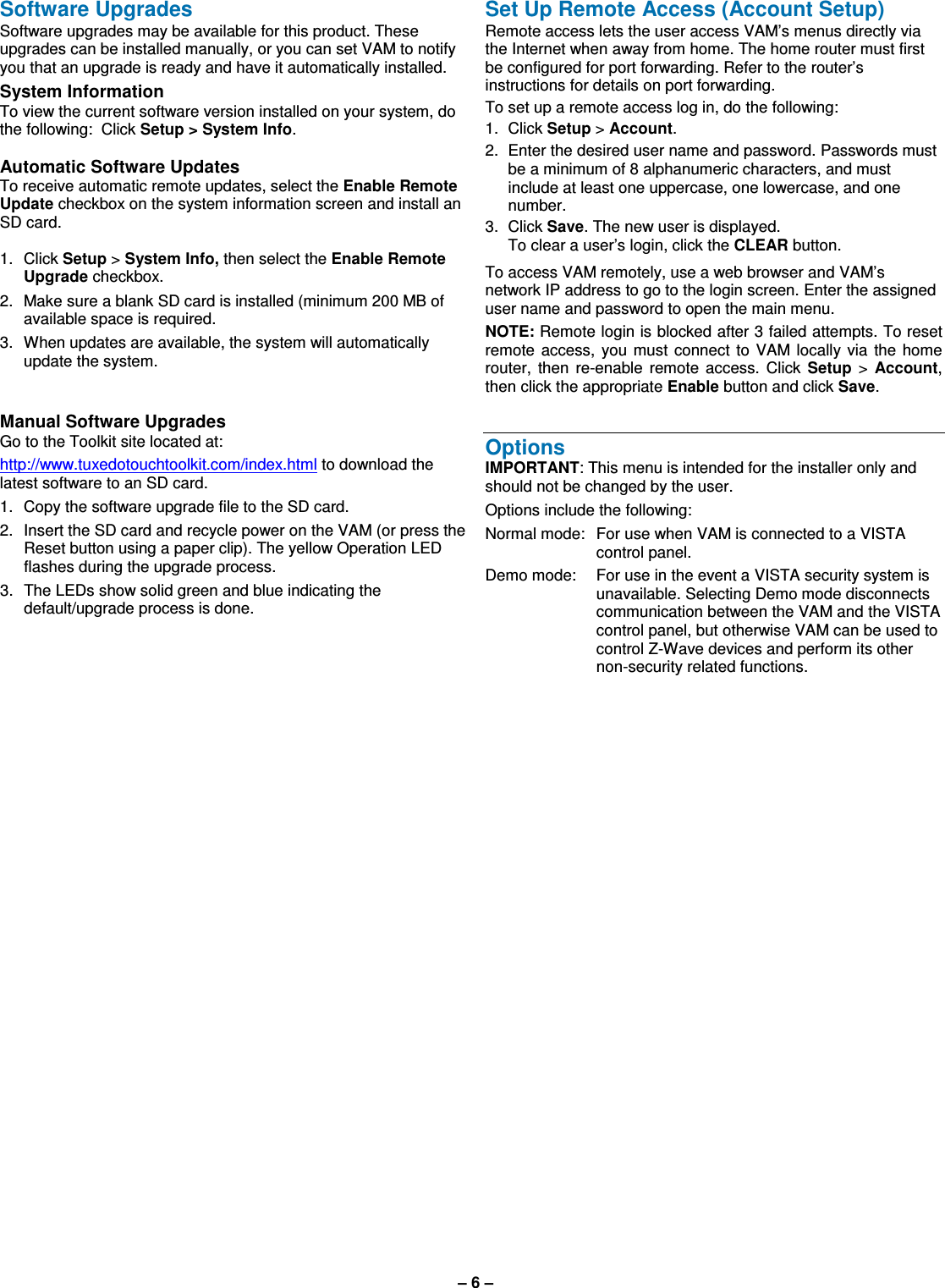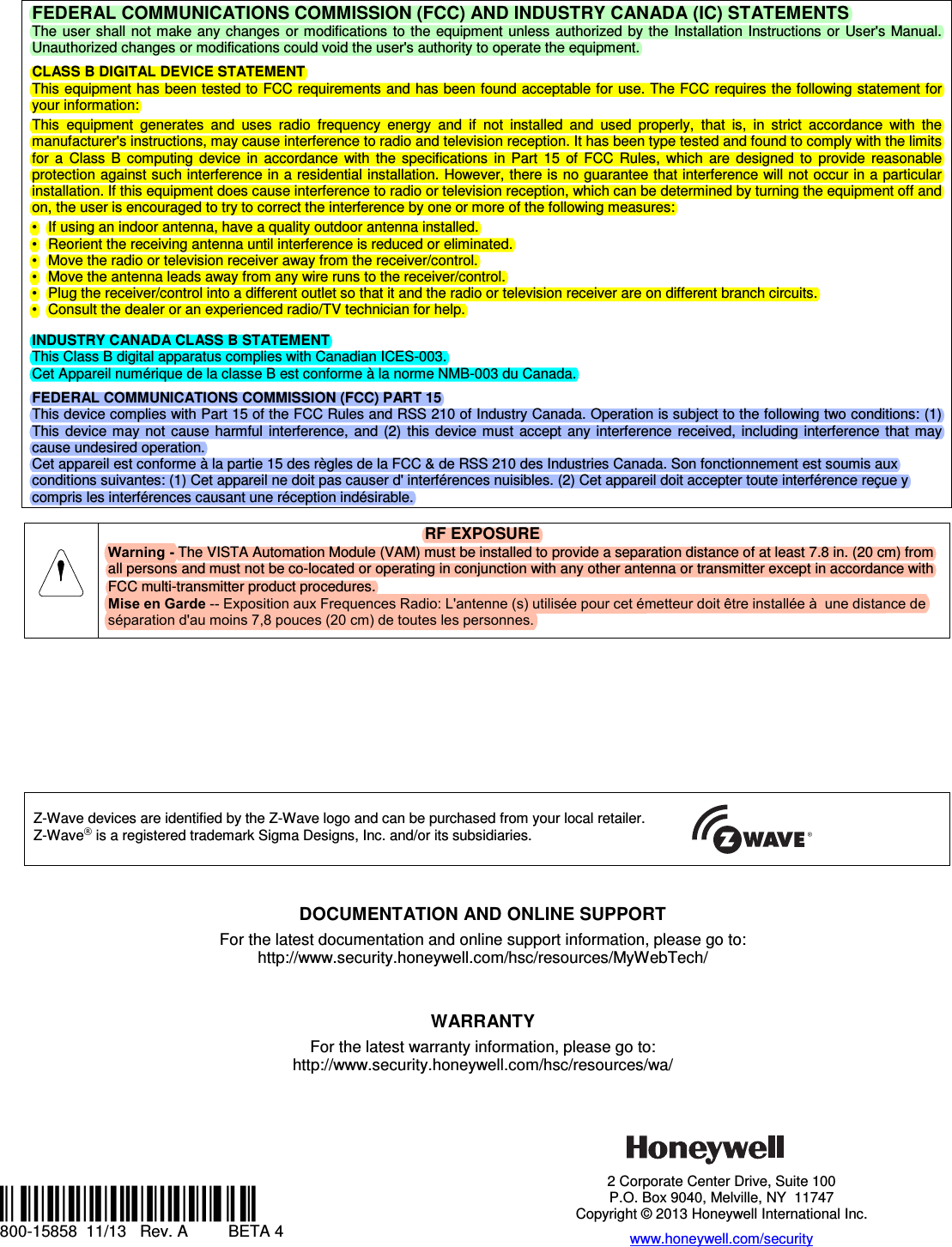Ademco 8DLVAM Vista Automation Module User Manual 800 15858 A VAM qg beta4
Honeywell International Inc. Vista Automation Module 800 15858 A VAM qg beta4
Ademco >
Contents
- 1. Users Guide Rev 042514
- 2. Quick Install Guide
Quick Install Guide
